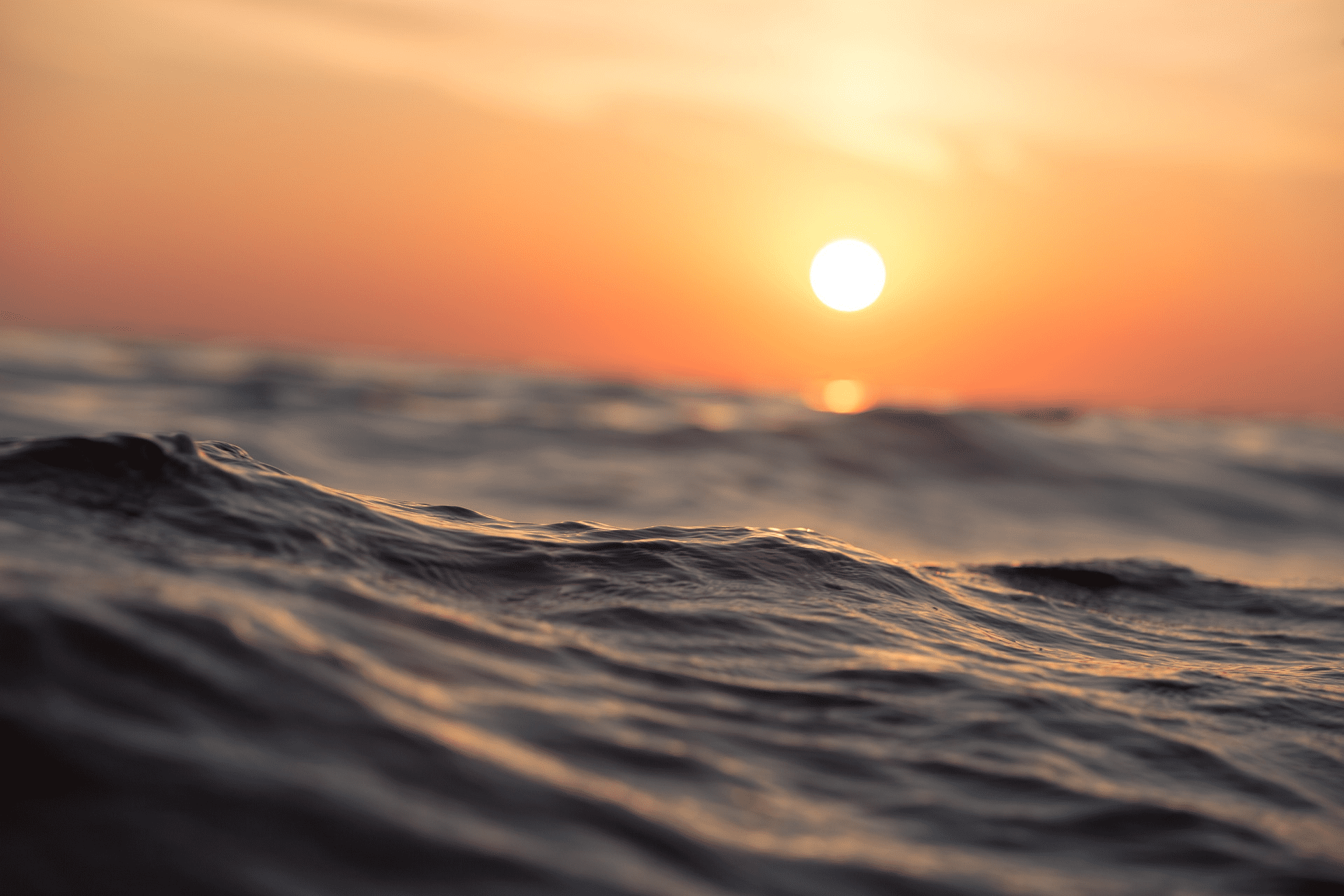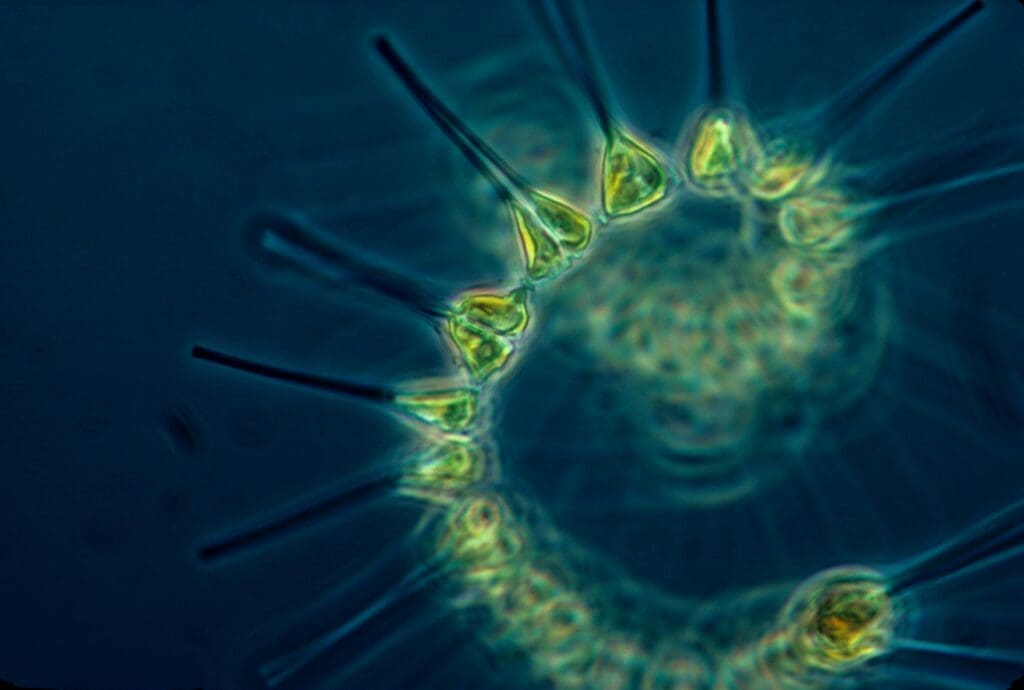Phytoplankton Carbon Solutions
OV’s Phytoplankton Carbon Solutions project focuses on marine carbon dioxide removal (CDR) pathways that leverage open ocean phytoplankton productivity to boost the capture of dissolved CO2 and subsequent export of organic carbon from the surface ocean to the deep sea for long-term carbon sequestration.
Why Ocean-Based Carbon Removal?
- Climate change is here, affecting people around the world, our ocean, and many other aspects of nature we depend on.
- Under the Paris Agreement and through individual state actions, nations and non-state actors are rightfully focused first and foremost on the need to reduce emissions that lead to climate change. In addition to these non-negotiable and urgently needed emissions reductions, the Intergovernmental Panel on Climate Change (IPCC) says we must also remove between 100 and 1000 gigatons of CO2 build up in our atmosphere in this century to meet climate targets.
- Achieving carbon dioxide removal (CDR) at the scale indicated by the IPCC requires rapidly and thoughtfully expanding responsible RD&D across multiple pathways to determine what constitutes an effective and safe portfolio of CDR approaches across the planet.
- The ocean plays a critical role in the global carbon cycle, naturally absorbing 25 to 30 percent of CO2 released to the atmosphere by human activities. Covering 70% of the planet’s surface, the ocean passively absorbs this CO2 gas pollution, which is further enabled by biological and chemical processes that remove dissolved CO2 from surface waters.”
- Maintaining natural ocean carbon sinks is an essential component of the climate response. Scientific research has begun to explore ways of enhancing the impact of the ocean as a carbon sink.


What is Phytoplankton-Based CDR?
- There are a wide range of potential marine CDR (mCDR) pathways. Some mCDR pathways aim to boost carbon capture via marine vegetation through photosynthesis. These include blue carbon habitat restoration, seaweed cultivation, and microalgae cultivation and export. Other pathways explore the potential to enhance the sequestration capacity of seawater itself via increasing the alkalinity of seawater, using either minerals or alkaline liquid.
- We define Phytoplankton-based CDR as open ocean techniques to (i) stimulate phytoplankton growth and biomass by augmenting nutrients in surface waters through surface additions (and potentially artificial upwelling) of micronutrients and/or macronutrients, as well as (ii) techniques that enhance export of organic carbon from phytoplankton productivity into the deep ocean. One of the most well-known phytoplankton-based CDR techniques is ocean iron fertilization, an approach that replicates the natural dispersal of iron rich dust onto the ocean to stimulate growth of phytoplankton, which are the base of the food web for ocean biodiversity.
What do we know about the benefits and risks?
- Current scientific knowledge indicates that phytoplankton-based CDR techniques may be able to achieve climate-relevant CDR scales (>1 gigaton of CDR annually) while being cost competitive (<$50 per ton of CDR).
- Over a dozen field trials were conducted during the 1990s and 2000s that focused on stimulating phytoplankton growth via iron fertilization. Those field trials demonstrated the capacity to stimulate phytoplankton productivity. Questions remain about the fate of that increased biomass and the efficiency and effectiveness of resulting deep ocean and benthic sequestration. Still other questions remain about environmental and socioeconomic impacts attributable to these interventions.
- In 2022, a U.S. National Academies of Science, Engineering, and Medicine’s (NASEM) report on mCDR recommended that “a research program for [marine] CDR should be implemented, in parallel across multiple approaches, to address current knowledge gaps. The research program should … provide an improved and unbiased knowledge base for the public, stakeholders, and policymakers”. Phytoplankton-based CDR (there categorized as ocean iron fertilization) was listed as one of the highest priority areas in need of further research and development.


What is the Phytoplankton Carbon Solutions project?
- This project will identify, categorize, and prioritize key remaining issues and questions required to be addressed to enable informed decisions about phytoplankton-based mCDR. The project will then describe and define the fundamental elements of a responsible, safe, and well-governed research, development and demonstration (RD&D) program for open ocean phytoplankton-based CDR research.
- The project will identify all known potential environmental and social benefits and risks associated with priority phytoplankton-based CDR pathways. The project will then recommend specific research designs needed to fully assess these risks and benefits.
- The project focuses on priority phytoplankton-based CDR pathways that have the potential to reach a gigaton scale of sequestration benefits if executed, and where expected costs have the potential to be feasible in comparison to other potential CDR pathways.
Project phases
- Phase 1: Define Project Focus (October 2024 – January 2025). This phase establishes the project scope, logic framework, an Advisory Board and an initial research plan.
- Phase 2: Research and Design (December 2024 – March 2025). Phase 2 involves a landscape scan of literature, survey of existing activities (e.g., initiatives, organizations, projects), identification of experts, and engagement with ocean and climate leaders. Early interviews and information synthesis will inform an approach to phase 3. At the end of Phase 2, the core project team and advisors shared a draft program design at the Ocean Visions Summit, and received extensive feedback from a range of technical experts.
- Phase 3: Development, Feedback and Revision (March 2025 – August 2025). This phase centers on gathering extensive feedback from relevant communities and co-design of a draft R&D program.
- Phase 4: Public Comment & Final Recommendations (September 2025 – January 2026). This phase integrates Advisory Board and additional expert recommendations into a draft R&D program design, released for public commentary in the form of a report. A 30-day comment period will be held through October 30, 2025 to solicit feedback on the draft report. Three webinars will be held during this comment period, all on October 14, for different time zones: October 14 at 9:00 am Eastern Time (GMT-1:00 pm) | October 14 at 12:00 pm Eastern Time (GMT-4:00 pm) | October 14 at 7:00 pm Eastern Time (GMT-11:00 pm). This feedback will inform the final recommendations and program activities, which will be shared as a final report in January.
Core Team and Advisors
Advisory Board
Mattias Cape, Marine Biogeochemical Scientist, Environmental Defense Fund
Leticia Cotrim da Cunha, Associate Professor and Coordinator of Laboratório de Oceanografia Química, Universidade do Estado do Rio de Janeiro
Anna-Maria Hubert, Assistant Professor, University of Calgary Faculty of Law
Tom Lawton, Senior Staff Scientist, John Hopkins Applied Physics Laboratory
Terre Satterfield, Professor of Culture, Risk and the Environment, The University of British Columbia
Brad Warren, Chief Executive Officer, Global Ocean Health
Angelicque White, Associate Professor, University of Hawaiʻi at Mānoa
Steering Committee
Marc von Keitz, Director Oceans, Grantham Environmental Trust & Grantham Foundation for the Protection of the Environment
David Koweek, Chief Scientist, Ocean Visions
Ruth Driscoll Lovejoy, Program Director, Ocean Visions
Brad Ack, Chief Executive Officer, Ocean Visions
Core Project Team Leads
Eric Schwaab, Senior Fellow, Ocean Visions, formally Senior Vice President at Environmental Defense Fund and Assistant Administrator at NOAA.
Lydia Kapsenberg, Senior Associate, CEA Consulting, PhD, Marine Ecology, Evolution, and Marine Biology
The Phytoplankton Carbon Solutions research project is housed at Ocean Visions. It is part of a larger mCDR effort, entitled Advancing Marine Carbon Sequestration (AMCS), supported financially by the Ocean Resilience and Climate Alliance (ORCA) and led by the Grantham Environmental Trust as a re-granter.
The Phytoplankton Carbon Solutions project is committed to compliance with the Ethical Framework Principles for Climate Intervention Research developed by the American Geophysical Union (AGU) through an international consultation process.
Contact and inquiries
We welcome expert and community input through the course of this project. Please get in touch with Eric Schwaab at Eric.Schwaab@oceanvisions.org.